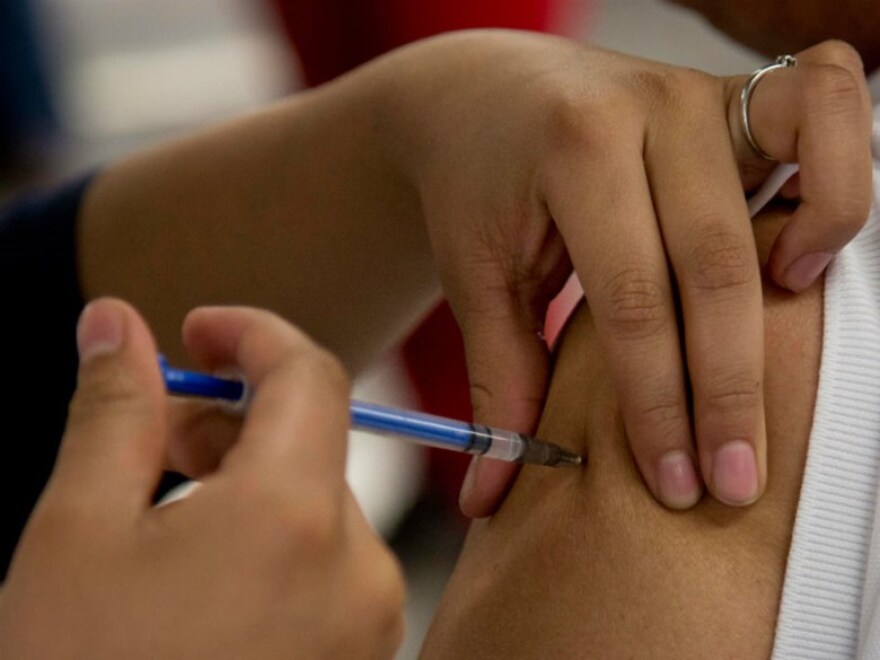During a press briefing, California Health and Human Services Secretary Dr. Mark Ghaly warned that people should exercise caution when gathering for Thanksgiving, and should do their part to reduce strain on hospital systems.
He said that wastewater surveillance shows rising COVID transmission in communities across the state.
“Although the models aren't nearly as concerning as they've been in the past, we are dealing with three threats at once,” Ghaly said. “So together they do add up.”
Ghaly recommended that Californians get their COVID and flu vaccines, utilize treatments early, and not go to the emergency room with mild symptoms.
Last week, a hospital in San Diego began using an overflow tent to treat patients outside, after seeing an increase in flu cases.
Ghaly said that may be in the future for other local hospitals. “Certainly if it's not happening yet, it may happen soon with the increasing pressures of what we’ve come to expect in the weeks to come,” he said.
Public health officials and experts who look at wastewater for viral clues are saying the Sacramento region is poised to experience another COVID-19 surge, as flu and RSV seasons have gotten underway early. What’s not clear is what the COVID surge will look like as it intersects with those other viruses, since people are seldom wearing masks and gathering indoors in larger groups, without restrictions.
“We don't know how much of a surge it will be at this point,” said Sacramento County Public Health Officer Dr. Olivia Kasirye, of the uptick in COVID, “but we're definitely seeing an increase.”
In previous years, public health experts could monitor COVID case rates by checking in with — and reporting from — testing centers. But now, those centers are largely a thing of the past, as at-home test kits are readily available, and people are inconsistent about reporting positive COVID cases to authorities. Health insurance covers eight COVID-19 tests per person, per month.
Since the beginning of the pandemic, the wastewater treatment plant run by RegionalSan has been collecting samples of West Sacramento and Sacramento County water for epidemiological purposes. For the past year, they’ve also been sending regular samples to Stanford University for analysis through the Sewer Coronavirus Alert Network (SCAN).
“The levels are going up for COVID in in our wastewater, not to the degree of previous surges or anything like that, but it is trending upward,” said RegionalSan General Manager Christoph Dobson.
The Sacramento County Public Health department has also been receiving reports from SCAN, and confirms the trend matches what they’ve seen so far in test positivity rates reported by healthcare providers.
Kasirye says that, although SCPH doesn’t expect case rates will be as high as they were last winter, when the highly contagious Omicron variant swept through, there is “concern” for a variety of reasons.
Kasirye said in prior years, there have been restrictions on gathering and mandatory masking in public settings. The elimination of those public health measures, plus the upcoming holiday season, has many worried about a “tripledemic”: with COVID, flu and RSV intersecting and the latter two already straining area hospitals.
According to COVID-19 data from the California Department of Public Health, Sacramento is seeing a 7.7% test positivity rate, up from 5.7% at the beginning of the month. Hospitalization and ICU numbers are still decreasing, although they’re known to lag behind case numbers.
As far as what needs to be done to stop the spread, Kasirye says the first thing to do is get up to date on COVID and flu vaccines, which she stresses are very effective. In addition, she says to keep up standard disease prevention efforts: handwashing, and masking when in crowded spaces or on public transportation. Above all, “if you're sick, just stay home, stay away from other people so that you do not spread the disease to other people as well,” she said.
Copyright 2022 CapRadio


